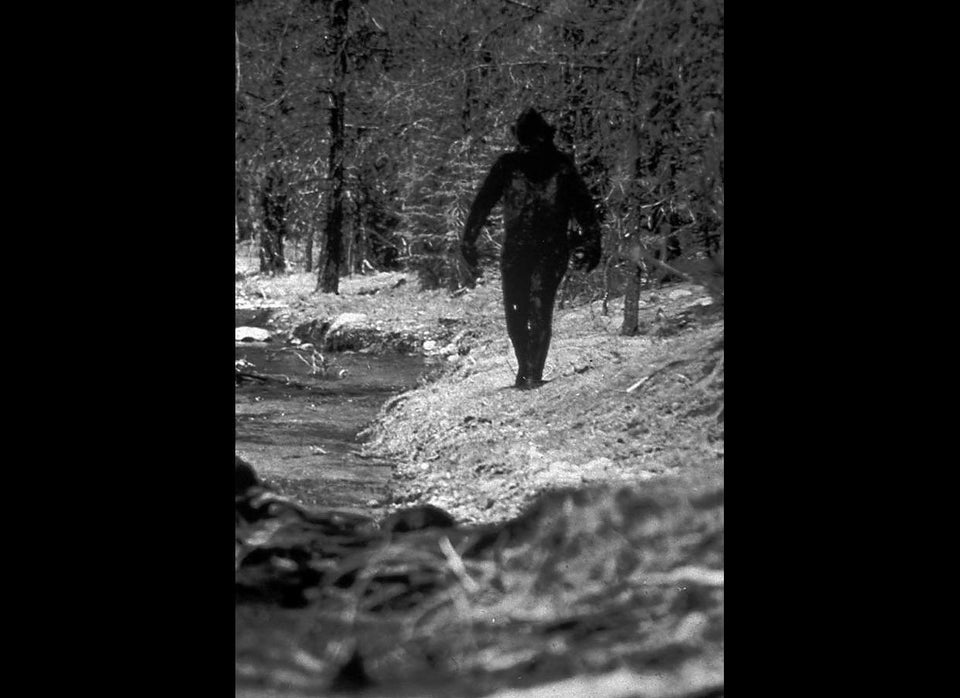A group of international scientists made headlines last month after suggesting they were "95 percent" certain they'd found evidence that the elusive Yeti -- or fabled Siberian Snowman -- really exists.
But one scientist who was part of the big snowman hunt tells The Huffington Post that local Siberian officials staged the entire snowman scenario -- all for publicity.
"It was a very awkward feeling because here I was a guest and this was clearly orchestrated," said Idaho State University anthropologist and anatomist Jeffrey Meldrum.
PHOTOS: (Story Continues Below)
And now, as researchers claim that twisted tree branches are possible proof of the Yeti's existence, Meldrum is offering a word of caution.
"Since nobody has demonstrated to me any corroborating evidence, like footprints in direct association or hair intertwined in any of these [tree] structures, I'm much more inclined to think the majority of them are just natural occurrences," he said.
Meldrum was among a handful of scientists and investigators invited to Russia's Kemerovo region -- about 2,000 miles east of Moscow -- in October to look at possible evidence of a large, hairy primate, known as the Yeti or Siberian Snowman.
"I was happy when I learned there was interest by Russian government authorities to promote and sponsor the organization of a [Yeti] institute," Meldrum said.
"I thought that, at the very least, the official recognition of an institute -- of the need and the desirability to investigate these claims -- was a positive step," he said.
Meldrum, author of "Sasquatch: Legend Meets Science," was the only American scientist in the group that traveled to a huge cave in Kemerovo, home to an alleged Yeti.
His suspicions began when trip organizer Igor Burtsev, head of the Yeti Institute at Kemerovo State University, told the group that it might find some remains of Yeti footprints in the cave.
"Somebody found a right footprint," Meldrum said. "But I thought it was a little vague and not real distinct. It was a pretty expansive cave and there could've been footprints all over the place, if there was something tromping around in there in the sand."
When Meldrum decided to go farther into the cave on his own, followed by a cameraman, "one of the regional government people saw us and rather harshly called us back, stopping us from going any farther back."
"I thought that was kind of odd, and then someone picked up a little tuft of hair that was apparently pressed into the footprint. At that point, I wasn't comfortable with the situation and had an inkling of what might be happening," Meldrum said.

Adding to his growing feeling that the entire situation was a setup, the respected American scientist (pictured at right, holding a replica of a Bigfoot cast from Washington state) said that the trail leading to the cave had been well maintained and showed signs of being frequently visited, including graffiti on the cave walls, remnants of some campfires and discarded trash.
Another piece to this problematic scenario was that as soon as Meldrum suggested he couldn't place any credibility in just one footprint, suddenly another one was found -- another right footprint. When he looked a little further, he found a third print, "but it was also a right and I said it would be nice to find a left one, and I said facetiously, 'Is the Yeti playing hopscotch here?'" (See Meldrum inside the cave in the video at the top of this story.)
"But my point was simply that if this was a spontaneous line of tracks, we'd expect to see both rights and lefts," he said. "And why is it that the tracks are only leading out and none are leading in?
"If an animal is occupying this cave, it's not going to sleep on this cold, wet ground. It's going to have some kind of a bed or a nest of sorts. And just as if on cue, I'd barely got the words out when one of the [officials] raised his torch beam and there, under a little alcove on the side, was this neat little fern bed or mattress or nest."
It was at this point that Meldrum said he realized that everything that happened in the alleged Yeti lair was likely completely staged for his and the media's benefit. The publicity certainly wouldn't hurt Kemerovo's skiing tourism activities.
"These prints were too odd-looking and I said to everyone that if something was sleeping in here, this nest would be compacted and pressed down," Meldrum said. "We should be able to quickly find hair among the things here, and I can't see anything."
Meldrum added that Burtsev then dove onto the ferns in front of the cameras. "And I thought, 'Well, that's very scientific, Igor, you've just contaminated the whole scene.'"
Most of the participants and press were excited about what was found in the cave, which led to the headlines declaring they were "95 percent" certain of Yeti's existence.
But Meldrum was disappointed with the entire incident, including talk of how fallen and twisted trees across the trail were assumed to be an intentional action on the part of a Yeti or a wild snowman, obstructing the trail. He thought the close proximity of the twisted branches was suspiciously convenient.
Despite his skepticism of what happened in Siberia, Meldrum nonetheless believes there's been enough real and anecdotal evidence over many decades that suggests there might really be tall, hairy, unknown hominids in the Siberian region with similar characteristics to reported Bigfoot and Sasquatch sightings found elsewhere in the world.
With so much hype over alleged footprints, broken tree branches and a nest of ferns, let's not forget what would constitute the ultimate proof in the decades-old hunt for the Yeti or its North American hairy cousins: a body, dead or alive. That would open up a whole new branch of hominid science and would certainly quiet the skeptics.
And now that he's voiced his dubious opinion on the events of the Siberian Yeti hunt, Meldrum said he doubts he'll be included in any future Russian field trips.
"They were talking about having this conference become an annual event," he said, "and I'm quite confident I will not be invited back."

